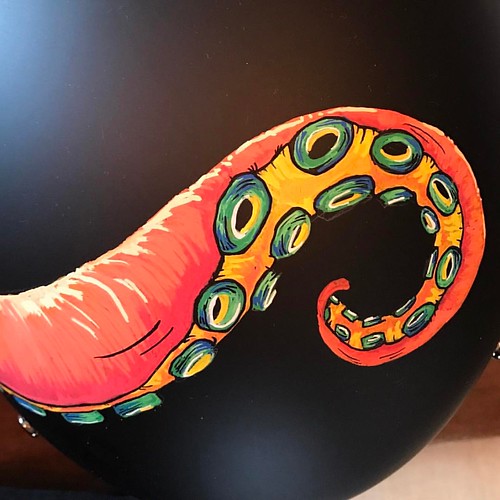at 2 weeks and increased in all mutant mice 4 weeks post-infection. IL-12p40 serum amounts were comparable in memTNFD19,K11E KI and wild-type mice but lower in memTNFD112 KI and TNF2/2 mice at 2 weeks, and at 4 weeks, they were higher in memTNFD112 KI, and TNF2/2 mice. IL-12p40 lung content also revealed increased values in all mutant mice at 4 weeks infection compared to wildtype mice. Serum amounts of RANTES at 2 weeks infection were reduced in mutant mice, but at 4 weeks, levels were only lower in memTNFD112 KI and TNF2/2 mice compared to wild-type mice. RANTES lung amounts were increased at 4 weeks of infection in memTNFD19,K11E KI and in memTNFD112 KI mice compared to wild-type mice. MCP-1 serum levels were decreased in mutant mice at early infection as also observed for lung levels in all mutant mice, but at 4 weeks infection they were increased in memTNFD112 KI and TNF2/2 mice but not in memTNFD19,K11E KI mice compared to wild-type mice, suggesting an enhanced activity of lung macrophages. A general pattern of activation of inflammatory mediators revealed a delay in mutant mice at early infection which was attenuated in memTNFD19,K11E KI mice. At late infection in mice suffering of progressive disease, an exacerbation of cytokine release was observed such as in memTNFD112 KI and TNF2/2 mice whereas memTNFD19,K11E KI mice exhibited normal or attenuated responses. To gain insight into the deficient pattern of activation observed at two weeks infection in memTNF KI mice, NF-kB phosphorylation patterns were analyzed by western blot. The pulmonary protein expression of the phosphorylated form of the p65 NF-kB subunit was compared with the unphosphorylated Deficient IFN-c antigen-specific production in memTNFD112 but not in memTNFD19,K11E KI mice We further analyzed the capacity of lymphocytes to respond to antigen-specific stimulation PubMed ID:http://www.ncbi.nlm.nih.gov/pubmed/22188681 to explore any difference between memTNFD19,K11E KI and memTNFD112 KI mouse Th1 type immune responses. IFN-c production was assessed after antigenspecific stimulation of splenocytes from 4 weeks M. bovis BCGinfected mice with BCG culture proteins or with living M. bovis BCG. MemTNFD19,K11E KI splenocytes released comparable amounts of IFN-c as wild-type, whereas memTNFD112 KI splenocytes dramatically lacked IFN-c production beta-Mangostin web indicating a deficiency in T-antigen-specific cell activation in memTNFD112 but not in memTNFD19,K11E KI mice. Splenocyte activation with live M. bovis BCG gave similar results; IFN-c production was lower in memTNFD112 KI cells. We also assessed antigen-activated Nitrite/Nitrate as a surrogate of NO production, which is mainly released by macrophages, and observed that NO production was similar in memTNFD19,K11E KI and memTNFD112 KI splenocytes. Amounts were much lower than in wild-type cells after antigen activation and also after M. bovis BCG infection, indicating the importance of soluble TNF for iNOS activity of macrophages. We further asked if IFN-c antigen-specific deficient activation of memTNFD112 cells could be attributed to differences in splenocyte populations in infected mice. But surprisingly, we found that the number of CD4+ T cells was 4 times higher in memTNFD112 KI compared to memTNFD19,K11E KI, and wild-type mice. However, the total number of CD11b+ was comparable in memTNFD1 9,K11E KI, memTNFD112 KI and wild-type mice suggesting  that memTNF cannot replace soluble TNF in activating splenic iNOS ex-vivo. iNOS levels are reduced in M. bovis BCG-infected memTNFD112 KI m
that memTNF cannot replace soluble TNF in activating splenic iNOS ex-vivo. iNOS levels are reduced in M. bovis BCG-infected memTNFD112 KI m